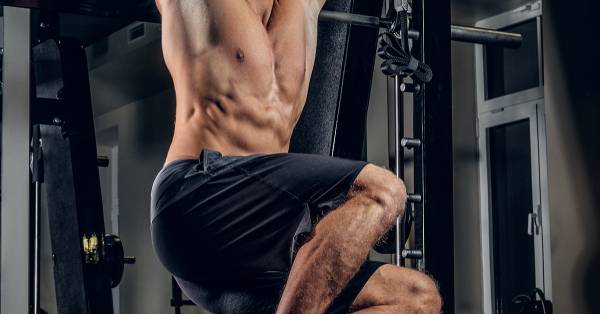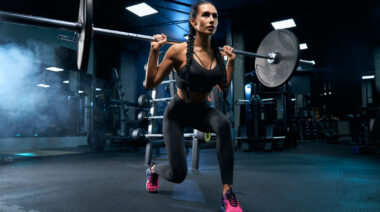No one likes to be weak. You go to the gym to look, feel, and be better. Whether your goal is strength, hypertrophy, power, or general fitness and well-being, weakness is never on your radar.
Weakness could be divided into two general areas. First, the literal definition of the term as it applies to function, meaning weakness in movements like vertical push, hip hinge, or horizontal pull. This definition can also be applied to specific biomechanical areas like glutes, posterior deltoids or hamstrings. These are all examples of strength-related weaknesses.
The other category is aesthetics. This application of the term is more common in the average big box gym, where bigger pectorals are prioritized. Some examples of aesthetic weakness include smaller musculature of the latissimus dorsi compared to the pecs, or smaller and weaker triceps. Or, to be frank, the entire lower body.
When You Don’t Skip Leg Day
Those who are in the iron game for purely aesthetic purposes may not see the importance of shoring up weaknesses in their physique. They wear pants to the gym to hide their disproportionate legs, so that they can focus most, if not all of their attention on training their chest and arms.
Improving weak areas, even for aesthetic reasons, will significantly improve the performance of others. In other words, if your intention is to improve weak areas to look better, you will also be simultaneously improving the rest of your physique. For example, if you were to put extra time and effort into your hamstring training to “round out” your legs, you will positively affect the performance of your posterior chain as a whole. In turn, this will help balance the strength and stability of your entire lower body. Furthermore, key exercises like the squat will dramatically improve due to your prioritization efforts.
No matter what your initial intention for focusing on weaknesses, it would behoove you to take a more holistic approach toward your training for a better functioning physique.
Get Real About Your Weaknesses
The first step toward correcting any problem is admitting you have one. It’s time to swallow your pride and look at your physique and performance with an unbiased eye. Be honest. If you feel you aren’t able to give yourself an honest once-over, then ask your gym bud or a qualified trainer if you could be assessed for any weak areas. If your assessment is aesthetics-based, that’s fine. There’s a good chance they will correlate to performance weaknesses, as well.
Here are a few examples of the more common weaknesses in the average lifter’s physique. Of course, there are many individual areas specific to everyone but these are more typical.
Hamstrings
As a major player in the all-important posterior chain, the hamstrings offer plenty of bang for your training buck. They aid in every single full-body lift; all types of deadlifts and squats, all Olympic lifts, and even rows and other standing exercises. Along with your glutes, hamstrings are synergistic players in almost everything you do.
Triceps
The triceps have a huge role in every pressing movement. Without strong and sturdy triceps, other key pressing exercises will never reach their full potential. If your triceps are the weak link in a strong chain, they’ll be the first to snap and hold you back.
Supportive Back Muscles
As more links the posterior chain, the lats, rhomboids, teres, and other pulling muscles are often neglected in gym routines, in favor of the pectoralis and anterior deltoids. Many gym-goers focus on pressing (namely the bench press) at the exclusion of all else, and neglect the volume of work needed for their back. Think of it as a strength balancing act.
Posterior Deltoids
Along with the rest of the back muscles, the posterior deltoids need their due attention. Their importance lies in differing angles of pulling. The posterior part of the deltoid complex can aid in high pulls, shoulder stability, and muscular balance. Without those benefits, you run the risk of unneeded injury.
Glutes
Why would you neglect to train the largest muscle in your body? But a whole lot of people do just that. The gluteus maximus plays a key role in hip hinge movements, as well as stability and strength for almost every exercise.
Calves and Tibialis Anterior
Small calves are the bane of almost every lifter who has ever touched a weight. What good is it to have massive, strong upper legs, with tiny, weak calves underneath? On the performance front, weak calves spell weak explosive power. Couple that with weak antagonistic tibialis anterior muscles, and you have two major challenges.
Abdominals
Do you suffer from low back pain, or is your lumbar area a weak point? You may suffer from a weak abdominal wall. Think about the bottom position of a squat. Your abdomen stabilizes your spine and keeps your pelvis stationary and strong during the lift. Weak abs spell a lack of strength potential.

Hit Your Weaknesses Where They Live
Now it’s time to list out some sample exercises to help you balance your training and perform at a higher level. These can be added to your current training plan, and will simply replace existing isolation exercises.
Hamstrings
- Barbell Romanian deadlifts: 4 x 8-10
- Lying or seated leg curls: 3 x 8-10
- Forward static lunges: 4 x 8-10
Triceps
- Weighted parallel bar dips: 4 x 6-8
- Diamond feet-elevated push-ups: 3 x as many as possible
- Rack triceps presses: 3 x as many as possible
Back
- Wide-grip pull-ups: 4 x as many as possible
- Inverted feet-elevated rows: 4 x as many as possible
- Parallel bent-over rows: 3-4 x 8-12
- Partial deadlifts: 3 x 6-10
Calves
- Tibialis anterior raises: 4 x 10
- Single leg, dumbbell standing calf raises: 4 x 10-15
- Seated calf raises: 4 x 10-15
Posterior Deltoids
- High pulley or banded pulls: 4 x 10-15
- Bent-over dumbbell rows: 3 x 10-15
Glutes
- Dumbbell Romanian deadlifts: 4 x 8-10
- Hip thrusters: 4 x 8-10
Abs
- Hanging leg raises: 4 x 10-20
- Floor pause crunches: 4 x 10-20
- Lying windshield wipers: 3 x 10-20
Train Your Weaknesses
Even if your purpose is more on the aesthetic side of things, you will also benefit functionally and increase the performance of certain exercises by training your weak areas. Getting strong where you were weak will improve big, compound moves like the squat, bench press, and deadlift. Shoring up these weak links will translate into bigger, safer lifts, so you can move forward with whatever your goal happens to be. It’s a win-win.
You can’t squat big if all your leg muscles don’t come to play:






